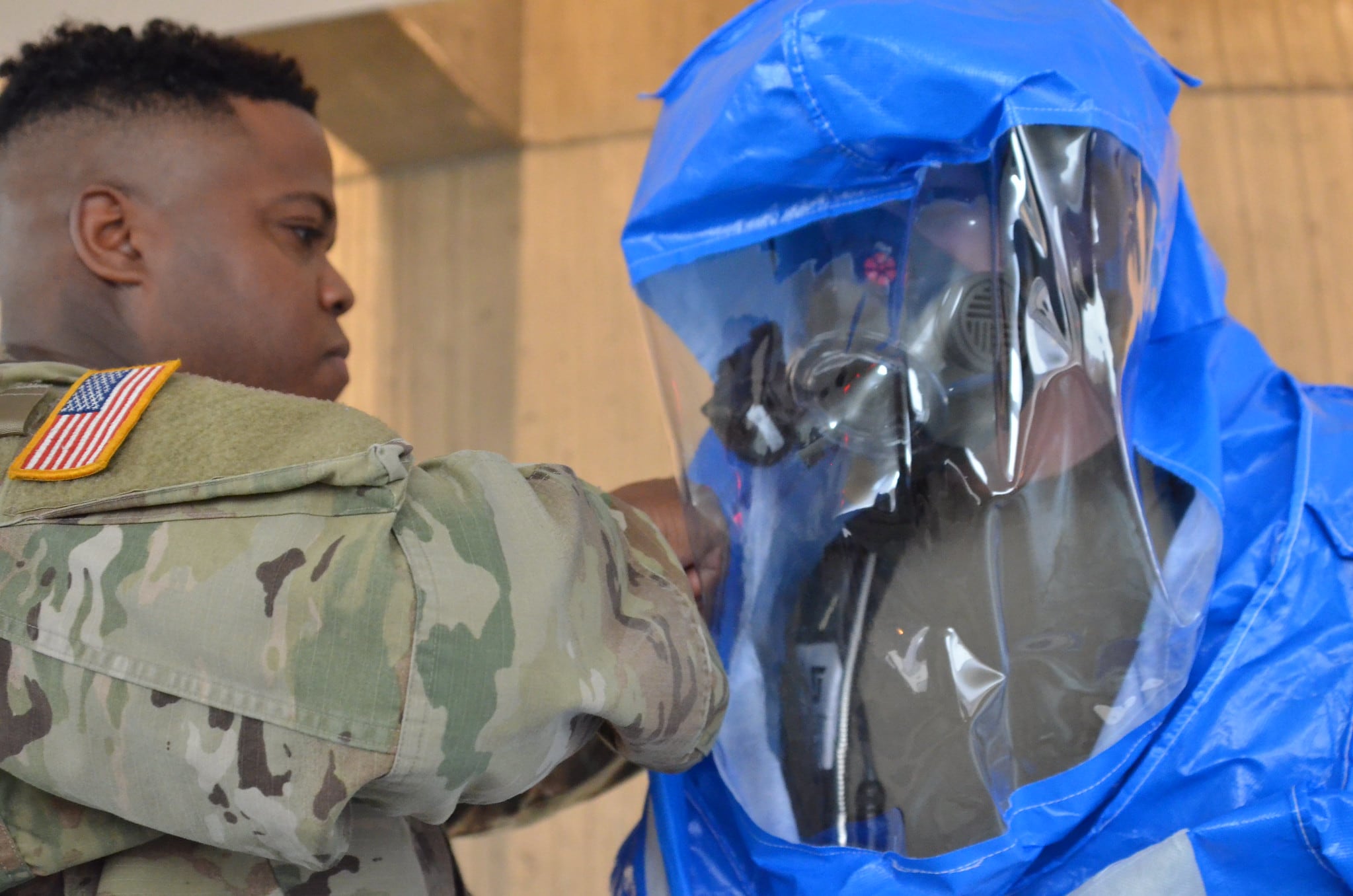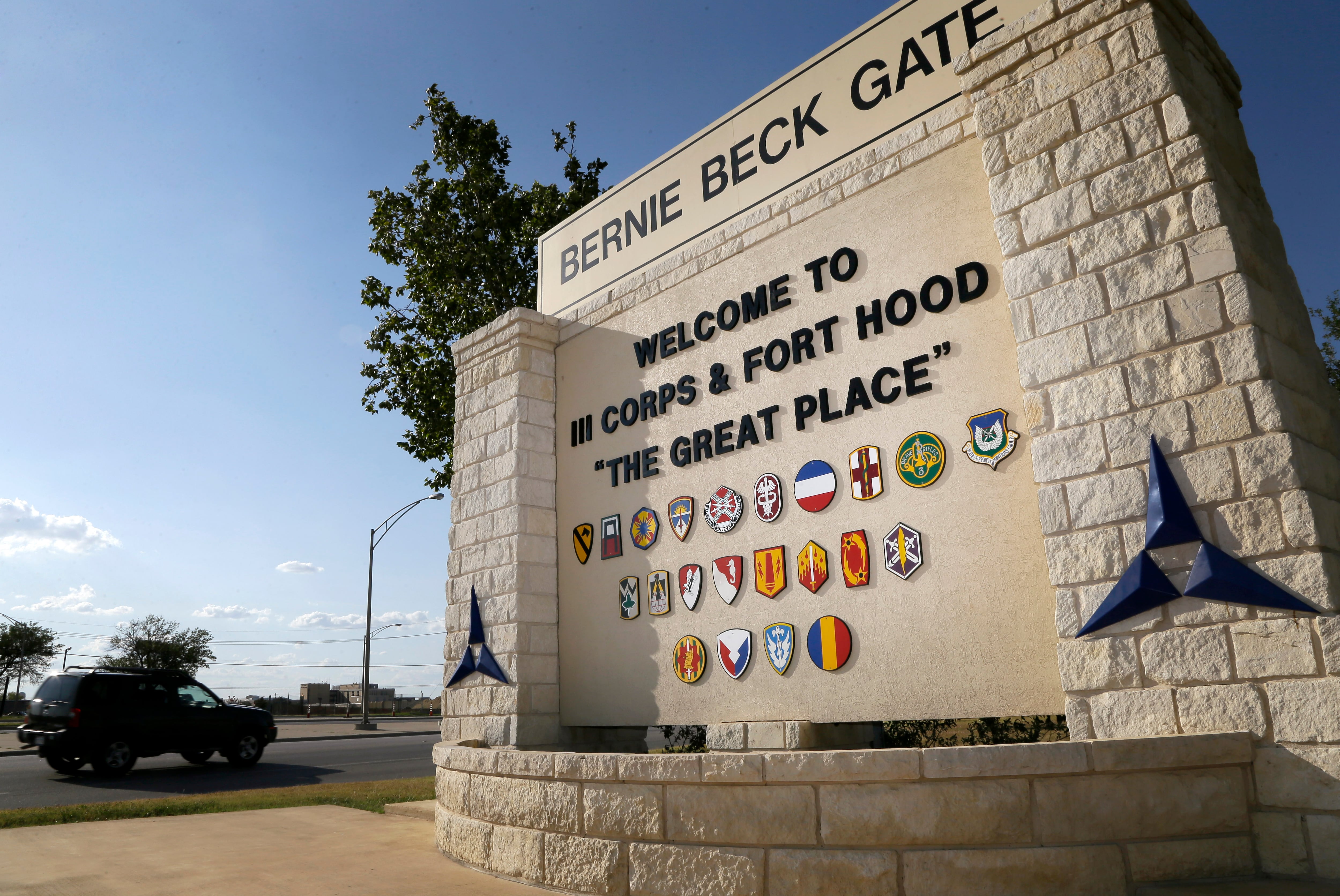Since shortly after the outbreak of COVID-19 this past spring, a group of Army National Guard soldiers, teamed with members of every service, has shifted its focus from a multistate, interagency nuclear disaster response to the pandemic.
Task Force 46, created in 2013 to manage responses to catastrophic chemical, biological, radiological and nuclear (CBRN), is primarily headed by members of the 46th Military Police Command out of the Michigan Army National Guard. The group has spent the past three years working on exercises that mimic a nuclear attack on major cities in the homeland.
Those types of exercises combine the efforts of local, state and federal agencies, with groups such as Task Force 46 helping to coordinate supplies, logistics and expertise that only the military can provide.
Sound familiar?
When COVID struck earlier this year, plans for the annual exercise were canned and the Task Force 46 headquarters had a new mission — deliver critical capabilities and coordinate with all levels to respond to the viral threat.
RELATED

Lt. Col. Michael Cochenour, director of the interagency planning cell for the task force, deployed to support the regional mission in the Michigan and Chicago area. He then served a subsequent deployment to assist in counter-COVID efforts in California.
Cochenour told Army Times that past years' work on multistate emergencies pulled together a variety of groups, and that was exactly what the task force had to do in the most recent response.
The main exercise has been called Vibrant Response. Army Times has followed those efforts in recent years, which have included a mock nuclear attack on Detroit and dense urban terrain operations planning.
The development of an “all-hazards type plan,” helped set up a way to attack whatever was thrown at the region, from a potential nuclear dirty bomb to biological terror strikes, even a novel coronavirus.
In April, the task force took over tactical control of defense coordination for the response, working with the Federal Emergency Management Agency in three of its regions, covering 15 states from Michigan and the Great Lakes region across the Midwest and as far south as New Mexico.
They deployed command and control assets to New Orleans and Dallas, and provided support for multiple Urban Augmentation Medical Task Forces, including one at a care facility in Detroit. By July, the task force had taken on Navy, Air Force and Marine Corps service members as part of its mission.
A few weeks later, the task force was heading 16 medical support units at separate hospitals across Texas. Those servicemembers cycled back to their headquarters as Texas and California hospitals gained staffing and capacity to serve their patients.
At its height, a total of 1,000 service members spread across as many as 15 states were providing relief and support to civilian agencies, from FEMA to local hospitals.
An estimated 800 of those service members were providing direct medical support, primarily as medical providers, nurses and technicians.
The remaining 200 servicemembers were running logistics, communications, personnel management, behavioral health support and operations planning.
One of Cochenour' s duties was to continually assess and implement “lessons learned.” That meant a rolling evaluation of what worked, depending on the facilities in the area and the region’s needs.
“This wasn’t an (After Action Review), we did it in real-time,” Cochenour said. “If anything seemed to be particularly salient or to pass along to other organizations, we shared in regular, ongoing meetings.”
Now, much of that information is being sifted through to better prepare the task force, should another response to COVID-19 or a similar such disaster be required.
At the same time, though the annual “Vibrant Response” exercise was put on hold to respond to a real-world, homeland disaster, planning continues for next year’s event, which has been pushed from the spring to the fall.
“Even though we train to it and prepare ourselves for anything, I am continually impressed with my fellow service members and civilian agencies we support," Cochenour said. "We came together rapidly,”
Todd South has written about crime, courts, government and the military for multiple publications since 2004 and was named a 2014 Pulitzer finalist for a co-written project on witness intimidation. Todd is a Marine veteran of the Iraq War.





